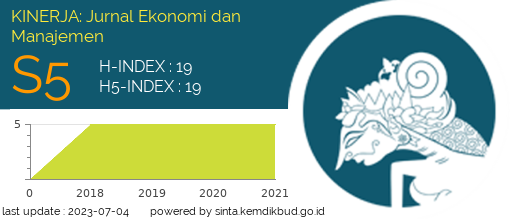Impacts of immigrants to gdp in malaysia: manufacturing, construction, services and agriculture
Abstract
International migration had occurred since World War ΙΙ and this global phenomenon keep growing in number especially in South East Asia countries. International migration usually occurred as a labor migration. Father of Economics, Adam Smith, describes labor migration as due to the imbalance in the labor market at different locations. Malaysia is a developing country in South East Asia that received thousands even millions of immigrants from Indonesia, Nepal, Bangladesh, Thailand, Philippines and Myanmar. These immigrants are filling the gap as low-skilled labors in sectors such as construction, manufacturing, and industrial. This paper aims to study and analyses the impacts of immigrants in different home countries to the host country, Malaysia in the context of gross domestic product (GDP). Does the migrants from different home countries giving impact to the GDP of Malaysia? In achieving the aim of the paper, authors used total GDP of Malaysia as dependent variable and number of immigrants in manufacturing, construction, service and agriculture as output. Data in this paper contained the number of immigrants in Bangladesh, Indonesia, Nepal and Myanmar segregated by their sector from 2013-2016. Authors used STATA 12 to regress the panel data and from the regression, authors obtained the significant effect of immigrants of manufacturing, services, and agriculture on GDP of Malaysia. Meanwhile, immigrants of construction and housemaid have insignificant effect on GDP of Malaysia. Hence, hiring immigrants from Bangladesh, Indonesia, Nepal and Myanmar will only benefits Malaysia if the immigrants work on sectors such as services and agriculture.
Keywords
Full Text:
PDFReferences
Athukorala, P. chandra, & Devadason, E. S. (2012). The Impact of Foreign Labor on Host Country Wages: The Experience of a Southern Host, Malaysia. World Development. https://doi.org/10.1016/j.worlddev.2012.04.025
Azam, M. (2015). The role of migrant workers remittances in fostering economic growth: The four Asian developing countries’ experiences. International Journal of Social Economics. https://doi.org/10.1108/IJSE-11-2013-0255
Boubtane, E., Coulibaly, D., & Rault, C. (2013). Immigration, unemployment and GDP in the host country: Bootstrap panel Granger causality analysis on OECD countries. Economic Modelling. https://doi.org/10.1016/j.econmod.2013.04.017
Department of Statistics Malaysia. (2016). Quarterly Constrution Statistics 2015.
Djafar, F., & Hassan, M. (2014). Home Bias and Network Effect of Indonesian Migrant Workers on Malaysia ’ S. Journal of Applied Economics and Business, 2(2), 5–16.
Feridun, M. (2015). Investigating the Economic Impact of Immigration on the Host Country: The Case of Norway. Prague Economic Papers. https://doi.org/10.18267/j.pep.270
Ismail, R., & Yuliyusman, F. (2014). Foreign Labour on Malaysian Growth. Journal of Economic Integration, 29(4), 657–675.
Jamadi, M. A. Bin. (2012). Foreign Labour Employment in Construction Project. Thesis of Master of Science (Construction Management). https://doi.org/10.1017/CBO9781107415324.004
Marwan, N. F. (2011). Macroeconomic impacts of immigration in Malaysia: Trade, remittances and unemployment.
Narayanan, S., & Lai, Y.-W. (2015). Migration and development in Malaysia: The impact of immigrant labour on the manufacturing sector, 1986-2010. Statewide Agricultural Land Use Baseline 2015. https://doi.org/10.1017/CBO9781107415324.004
Puron-cid, J. R. G. G. (2014). Using Panel Data Techniques for Social Science Research : an Illustrative Case and Some Guidelines. CIENCIAS SOCIALES, 21(3), 203–216.
Tan, P., & Gibson, J. (2010). The Impacts of Temporary Emigration of Lower-Skilled Females on Sending Households in Indonesia, (March), 2010.
World Bank. (2015). Malaysia Economic Monitor , December 2015 - Immigrant Labour.
DOI: https://doi.org/10.30872/jkin.v16i2.6221
Refbacks
- There are currently no refbacks.
Copyright (c) 2019 Heizlyn Amyneina Binti Hamza, Estro Dariatno Sihaloho
Kinerja: Jurnal Ekonomi dan Manajemen
Faculty of Economics and Business, Mulawarman University
Jl. Tanah Grogot No.1 Samarinda Kalimantan Timur 75119
Email: jkin.feb.unmul@gmail.com
StatCounter: Kinerja


